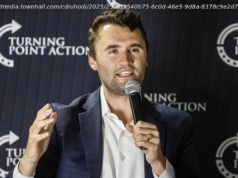As news of two celebrity suicides has upset many people around the world this week, it has presented a possibly lethal risk to a segment of the population.
As news of two celebrity suicides has upset many people around the world this week, it has presented a possibly lethal risk to a segment of the population: those already struggling with their own mental-health issues.
“Here we have two people similar in age, with different fan demographics, but who both have young kids, and are well-liked and well-respected in their fields,” Julie Cerel, president of the American Association of Suicidology, tells Yahoo Lifestyle regarding the suicides of both designer Kate Spade and chef/TV host Anthony Bourdain in recent days. “So people might say, ‘If their life is so bad, and they had everything, what hope is there for someone like me?’”
In other words, says Daniel Reidenberg, executive director of Suicide Awareness Voices of Education (SAVE), “‘if they couldn’t make it, how can I?’” That’s why, he tells Yahoo Lifestyle, “we know that when there’s a celebrity suicide, it increases the risk of contagion.”
But reasons for suicide are complex, and anyone can be at risk, regardless of social or socioeconomic status. It’s a fact unfortunately proven not only by the deaths of the highly successful Spade, who was 55, and Bourdain, who was 61, but also by the jarring statistics of a new report on from the Centers for Disease Control and Prevention (CDC), released on Friday: that suicide rates are up 25 percent nationally, have risen steadily in nearly every state between 1999 and 2016, and that, in 2016, there were more than twice as many suicides as homicides. Reasons for the spike, according to the report, range from problems with relationships and substance abuse to a physical health problem or “crisis” of some kind — issues that can affect anyone.
Still, when someone already thinking about suicide or dealing with any variety of mental-health struggles learns that a celebrity at the top of his or her game has committed suicide, it can be dangerously triggering.
Both Cerel and Reidenberg point out that following the 2014 suicide of Robin Williams — news that Spade’s sister said this week had captivated Spade’s attention at the time — there was a rise in suicides nationally; one study put the subsequent rise at 10 percent in the months that immediately followed.
“We saw a spike of same-method suicides… after some really graphic reporting,” says Cerel, who is also a psychologist and a professor at the University of Kentucky College of Social Work. “That gives a little correlational evidence to how it affected people already contemplating suicide”
Reidenberg sees the connection as even more absolute. “There are 100-plus studies around the world showing this correlation,” he says. “There was a 12 percent increase in suicide after Marilyn Monroe… We know it increases risk for others.”
Another recent example of this was with the release of the highly controversial Netflix drama series 13 Reasons Why, which depicts the suicide of a high school student — and which, according to one study, prompted a swift 20 percent rise in Google queries about suicide.
“Searches for precise suicide methods increased after the series’ release,” wrote the study’s authors, while also noting that it was unclear whether an increase in searches equals an increase in actual suicide attempts (though there’s typically a correlation between the two). In conclusion, they wrote, their findings “suggest 13 Reasons Why, in its present form, has both increased suicide awareness while unintentionally increasing suicidal ideation.”
So what is it about reports and even fictionalized depictions of suicide that can set off some individuals? “People at risk tend to overidentify with details in a story,” Reidenberg, also a psychologist and a representative of the International Association for Suicide Prevention (IASP), says. “So if someone [who took their own life] was married, had three kids, had these likes and these hobbies, somebody else can then put themselves in the narrative and say, ‘That’s my life.’”
Risk also increases with today’s increased media coverage of high-profile suicides, he says, noting, “It’s not about media covering it, but how they’re covering it — if it’s sensational, graphic, detailed, repeated frequently, glorified, romanticized, has no balance, and has messages about the specific method.”
Cerel says that people who have lost loved ones to suicide are at the most risk of suicide themselves and that it’s heightened even more after a high-profile suicide. “Just the story can become a trigger, and reminds them of their loved one, especially when the reporting is awful,” she says. By that, she means stories (such as many of those published right after Williams’s death) that are descriptive about method, include the contents of notes, and describe the acute reactions of loved ones.
“It becomes voyeuristic,” she says. Although some standards of journalism used to recommend nondisclosure, in some cases, if a cause of death was suicide, “we’ve now swung the other way too much… Journalists will tell me, ‘Well, people want us to paint a picture,’ but why? If someone dies of cancer, we don’t have to know what the person was wearing or what color their bed sheets were.” Further triggering, she says, is the constant barrage of instant reporting on a suicide.
“Twenty years ago, we wouldn’t have even heard about any of these deaths until the 6 o’clock news,” she says.
Guidelines for responsible reporting on suicides that could be less triggering, according to the American Foundation for Suicide Prevention, include avoiding sensationalistic headlines (“Kurt Cobain Used Shotgun to Commit Suicide”), leaving out photos of mourning relatives or tools of suicide, not printing the details of a suicide note, and avoiding words that describe the suicide in terms of a “successful” or “unsuccessful” attempt. Instead, the guidelines suggest, use a school or work photo of the deceased, include helpful hotlines for others who may be at risk, stick to the basic facts (“Kurt Cobain dead at 27”), mention that a note was found without describing its contents, and describe the death by using terms such as “died by suicide” or “killed himself/herself.”
Finally, if you know someone who might be at risk during this time of heightened reporting on the topic, there are simple measures you can take to be supportive, Reidenberg says.
Домой
United States
USA — mix Kate Spade, Anthony Bourdain: How celebrity suicides can impact those already on...






